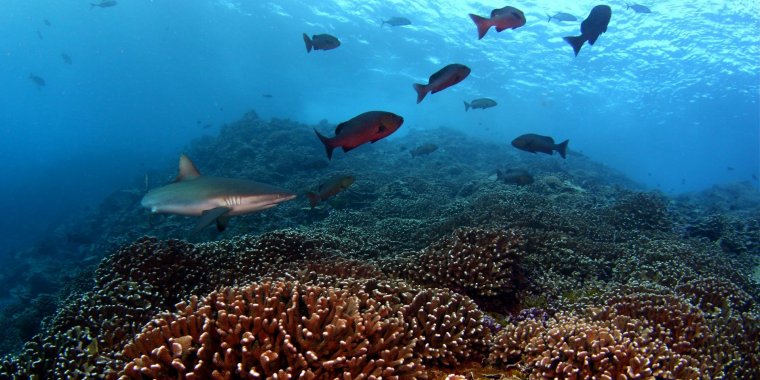| News / Science News |
Bacteria living near coral reefs change in synchrony across distances
Bacteria in waters above dozens of coral reefs change dramatically during the night, scientists have discovered, then return to the same daytime community they lived in the morning before. As if these communities are all on the same schedule, the changes are synchronized in reefs separated by hundreds of miles.

Microbes surrounding coral reefs change in sync by day and by night, scientists have found. Photo: Brian Zgliczynski
In coral reef ecosystems, microorganisms are essential for recycling nutrients that are important to reef organisms - transforming bits of organic matter into nitrogen and phosphorus, for example.
Investigations of day and night rhythms of reef processes are needed to understand the roles of microbes in these ecosystems.
The scientists conducted a research expedition to the Southern Line Islands, a remote island chain south of Hawai'i. They collected water samples just above coral reefs at midnight and again during the day to compare changes between night and day water chemistry and microbes.
The team discovered that a group of microbes called Psychrobacter appears to be the prime driver of the cycle. Psychrobacter forms 40 to 70 percent of the reef microbial community during the day. At night, these microorganisms are 100 times more abundant.
Changes in microbe composition over a day-night cycle show that coral reefs manipulate the chemistry of the surrounding seawater. This function may modulate the number of microbes in the water, promote cycling of energy through a reef's food web, or provide stabilizing effects to the ecosystem.
Ongoing work shows that a reef's health can alter the number and type of microbes in seawater, say the scientists, highlighting the consequences of altering reef habitats. (National Science Foundation)
YOU MAY ALSO LIKE




